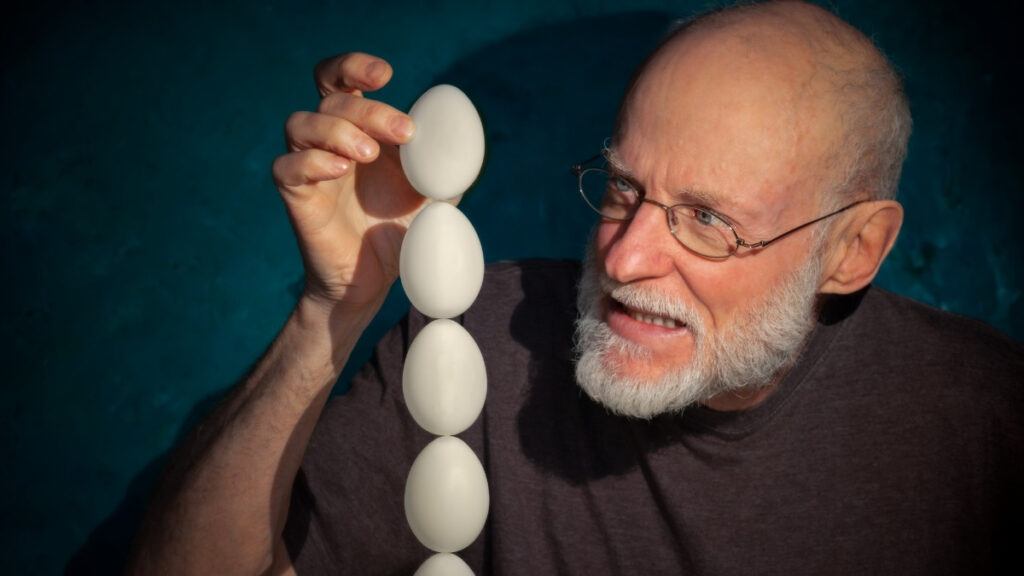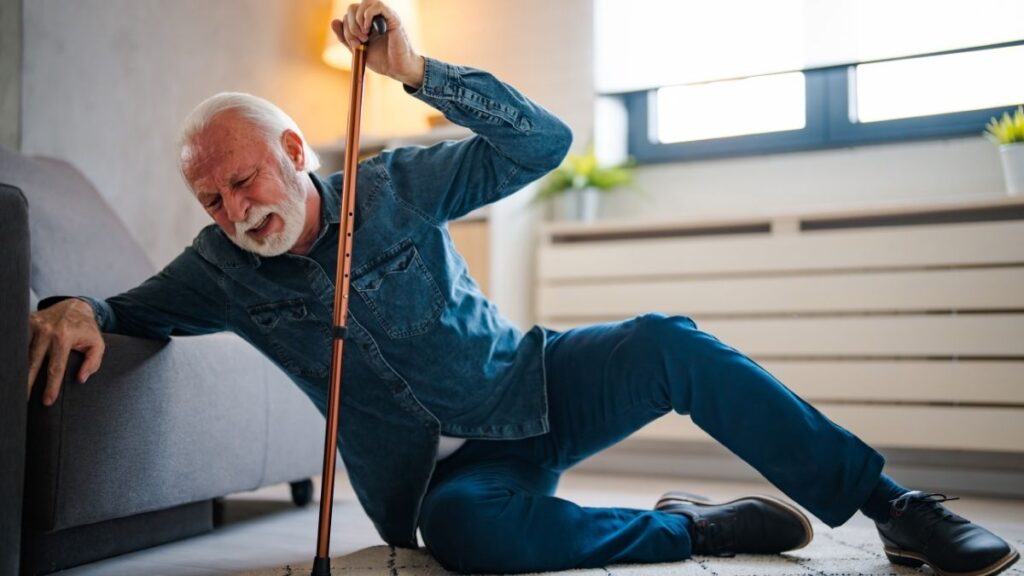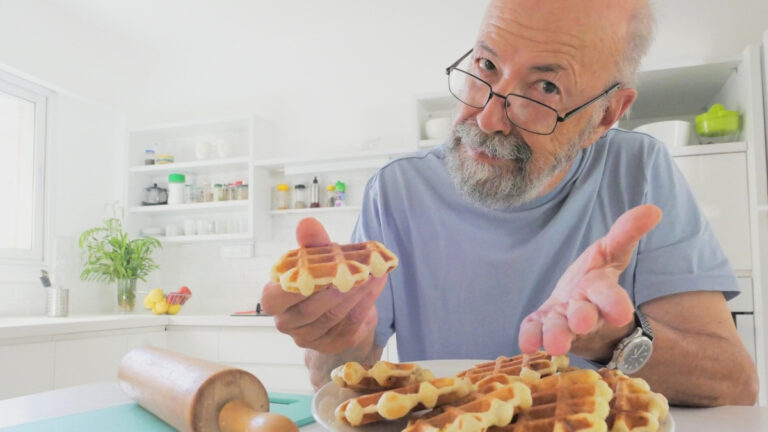The Top Healthy Living Tricks Seniors Use to Successfully Outsmart Chronic Disease: What Seniors Say Works Best
For the vast majority of seniors, managing health can feel like a full-time job. In fact, about 93% of older adults live with at least one chronic condition, and nearly 80% have two or more.
This often means a constant stream of appointments, new medications, and dietary restrictions. It is easy to feel like you are always reacting to your health, rather than being in control.
This article is different. This is not another list of “don’ts.” It is a guide to five powerful “do’s”—simple, proven “tricks” that many seniors use to outsmart their chronic conditions. These are actionable strategies, backed by 2025 science, to help you reclaim control and live a more vibrant, independent life.
Movement Medicine Plan
Trick 1: Rethink Exercise as Movement Medicine

The word “exercise” can be intimidating, especially when you are dealing with joint pain or fatigue from a chronic condition. But the first “trick” is to reframe the goal. The goal is not to “get fit” in the traditional sense; it is to use movement as a powerful medicine to treat specific symptoms.
The Centers for Disease Control and Prevention (CDC) recommends 150 minutes of moderate-intensity activity per week. A 10-minute brisk walk after breakfast, lunch, and dinner adds up to 30 minutes a day. You will have met the goal without ever stepping into a gym.
You also do not need high-impact workouts to see big results. Low-impact activities like walking, swimming, or gardening are gentle on the joints but highly effective for improving cardiovascular health and mood.
One of the most powerful “super-tricks” is Tai Chi. This gentle, slow-moving practice is a powerhouse for managing chronic disease. A 2024 study published in JAMA found that Tai Chi was more effective than standard aerobic exercise at lowering blood pressure in patients with prehypertension.
You can use filled water bottles, resistance bands, or even your own body weight with chair-based exercises. Add in simple balance activities, like standing on one foot while holding a counter, to complete your routine. This “multicomponent” approach is key to maintaining independence.
Today’s “Movement Snack”
- 10-minute living room walk
- 5 minutes of chair-based stretches
- 10-minute guided Tai Chi video online
Trick 2: Master the Kitchen with Two Simple Rules

Like “exercise,” the word “diet” can be overwhelming, filled with complex rules. The “trick” here is to ignore the fads and focus on two simple rules.
Rule one is to swap processed foods for whole foods. Preventive cardiologist Dr. Stephen Devries describes ultra-processed foods (UPFs) as “industrial creations made with little if any whole foods” that are high in sugar salt and unhealthy fats.
Research has linked diets high in UPFs to more than 30 different health conditions including heart disease type 2 diabetes and cognitive decline. A whole food is a food in its natural state like an apple a piece of chicken or a handful of nuts.
The “trick” is a simple swap where you exchange one processed snack like cookies or crackers for one whole food like fruit or nuts each day.
Rule two is to master portion control with a visual “trick” instead of counting calories. How much you eat is just as important as what you eat. The easiest way to manage this is to use a smaller plate such as a 9-inch plate.
For managing diabetes experts recommend the “Diabetes Plate Method” where you fill half your plate with non-starchy vegetables like broccoli salad or green beans one-quarter with lean protein like fish or chicken and one-quarter with carbohydrate foods like brown rice or a small potato.
For heart health the American Heart Association suggests visual cues where a serving of meat is the size of a “deck of cards” and a serving of pasta is about the size of your “fist”.
Trick 3: Make Your Pharmacist Your New Best Friend

For many seniors managing chronic conditions, the pill organizer is a daily reality. But this brings a hidden risk. The “trick” is to see your pharmacist as a critical member of your health team.
The danger is “polypharmacy,” a term for using multiple medications. It is incredibly common: about 1 in 3 adults in their 60s and 70s use five or more prescription drugs. Studies show that taking 5 to 9 medications creates a 50% chance of an adverse drug interaction.
The “trick” to combat this is the “Brown Bag Review.” At least once a year, schedule a meeting with your doctor or pharmacist. Put everything you take in one bag—prescriptions, over-the-counter pills (like pain relievers), and all vitamins and supplements.
Your “Brown Bag Review” Questions
- “Can you check all my pills (including supplements) for interactions?”
- “Is this medication still necessary for me?”
- “Are there any medications we can safely ‘de-prescribe’?”
The other side of medication management is adherence, or taking your medicine as prescribed. Missing doses is a massive public health issue that can make conditions worse. The “trick” is to use a simple tool.
A low-tech weekly pill organizer is still a fantastic option. For those comfortable with technology, 2025 offers powerful, user-friendly apps. Medisafe acts as a “virtual pillbox” that sends reminders and can even warn you about drug interactions.
MyTherapy is another great option that not only reminds you but also helps you track your blood pressure, mood, and other symptoms to share with your doctor.
Trick 4: Schedule Social Time Like a Doctor’s Appointment

This next “trick” may be the most important one in this article, and it has nothing to do with pills or food. It is about connection.
We must reframe loneliness as a critical medical issue. The 2023 U.S. Surgeon General’s report on loneliness delivered a shocking statistic: lacking social connection is as dangerous to your health as smoking up to 15 cigarettes a day. This is not a “fluffy” or “nice-to-have” tip; it is a vital sign.
The health risks are clear. Social isolation and loneliness are linked to a 29% increased risk of heart disease, a 32% increased risk of stroke, and a significantly higher risk for dementia, anxiety, and depression.
The “trick” is to prioritize social connection with the same seriousness as a doctor’s appointment. Schedule it. Put it on your calendar. It is that important for managing chronic disease.
How you connect is up to you. Schedule a daily phone call or weekly video chat with family. Join a local group that shares your interests, like a gardening club, a walking group, or a volunteer organization. For many seniors, finding these resources is the hardest part.
The 2025 Senior Resource Hub
Need help finding local groups, transportation, or support? The Eldercare Locator is a trustworthy, free public service from the U.S. Administration on Community Living.
- Call: 1-800-677-1116
- Visit: eldercare.acl.gov
Trick 5: Master Your Sleep (Even with Chronic Pain)

Is it harder to get a good night’s sleep than it was 20 years ago? You are not alone. As we age, our sleep patterns naturally change. The brain’s internal 24-hour clock, known as the suprachiasmatic nucleus (SCN), can become less reliable, disrupting our circadian rhythms.
For seniors with chronic conditions, this is often a vicious cycle. Chronic pain makes it hard to sleep, and poor sleep makes you more sensitive to pain the next day.
The “trick” to mastering sleep is “sleep hygiene.” Because your internal clock is less reliable, you need to give your brain powerful, consistent cues that it is time to rest. This means creating a non-negotiable bedtime ritual.
The single most important tip is to keep a regular schedule. Go to bed and—most importantly—get up at the same time every single day, even on weekends. This is the strongest signal you can send to your brain. Other key rules include:
Avoid blue light: Turn off all screens (TV, phone, tablet) at least one hour before bed. The light from these devices can disrupt your natural sleep-wake cycle.
Watch what you consume: Avoid caffeine late in the day (no coffee, tea, or soda after 3 p.m.).
Create a ritual: Spend 30 minutes winding down in a quiet, cool, and dark room. Read a book, listen to calm music, or practice relaxation exercises.
Trick 6: Treat Your Brain Like a Muscle

Just as physical activity keeps your body strong, mental activity helps keep your brain in shape and can reduce the risk of cognitive decline. The “trick” is to think of “brain health” as an active pursuit, not a passive one.
Challenge Your Mind: The key is to be curious and try things that are new to you. This stimulates new connections between nerve cells. This could include learning a new skill, taking a class at a local library, doing crossword puzzles, or reading.
Eat for Your Brain: You can also support your brain through nutrition. The MIND diet, which combines elements of the Mediterranean diet and the DASH diet, was specifically created to help prevent dementia and slow the decline in brain function.
Simple MIND “Hacks”: The diet emphasizes plant-based foods. Simple ways to start include snacking on a handful of nuts each day, adding berries to your breakfast, eating leafy green vegetables daily, and having fish at least once a week. It also recommends using olive oil as your main cooking oil.
Trick 7: “Fall-Proof” Your Home for Independence

A fall can be a life-changing event that threatens safety and independence. In fact, one in four people over the age of 65 falls each year. The “trick” is to take a proactive look at your home and remove hazards before an accident happens.
Many of the most effective modifications are simple and low-cost:
Clear the Floors: Remove tripping hazards like electrical cords, clutter, and especially “throw rugs.” If you must have area rugs, secure them firmly with double-faced tape or a slip-resistant backing.
Light Up Your Paths: Poor lighting is a major risk. Keep your home brightly lit and add nightlights in hallways, bedrooms, and bathrooms to illuminate the path from your bed to the toilet.
Secure the Bathroom: The bathroom is a high-hazard zone. Install non-slip mats or self-stick strips in the tub or shower and have grab bars professionally installed next to the toilet and in the shower.
Reorganize Your Reach: Keep frequently used items (like dishes or food) on lower shelves, ideally between your waist and shoulder height. This prevents you from needing to use a step stool.
Trick 8: Become a Pro at Lowering Prescription Costs

For seniors managing chronic conditions, the cost of medication can be a serious barrier to staying healthy, with some people skipping doses due to the expense. With the average person over 65 taking 14 to 18 prescription medications a year, these costs add up.
The “trick” is to be an active advocate for yourself and explore all available options.
Talk to Your Doctor and Pharmacist: Be open about cost concerns. Ask if there is a lower-cost generic alternative for your medication. Sometimes, there may even be a different, less expensive brand-name drug that treats the same condition.
Review Your Insurance Formulary: Your “formulary” is the list of drugs covered by your plan. Ask your pharmacist if any of your medications are in a higher “tier,” and if a “Tier 1” or “Tier 2” option is available, as these typically have the lowest co-pays.
Apply for “Extra Help”: The federal Extra Help program assists qualified seniors in paying for their Medicare prescription drug costs. You can also check if your state offers any additional assistance programs.
Find Patient Assistance Funds: Many nonprofit organizations offer financial aid for specific chronic illnesses. Groups like the PAN Foundation and the Patient Advocate Foundation have funds that can help you pay for the medications and treatments you need.
🏠 5-Minute “Fall-Proof” Checklist
Falls are a major threat to independence. Use this room-by-room guide to make your home safer in just 5 minutes!
- Remove all throw rugs. (They are tripping hazards!)
- Tape down or coil all electrical cords.
- Clear pathways of clutter, furniture, and pet bowls.
- Add nightlights in hallways (especially bed-to-bathroom).
- Ensure all stairways are brightly lit (top and bottom switches).
- Place a lamp or switch within easy reach of the bed.
- Place non-slip mats in the tub/shower and on the floor.
- Install grab bars next to the toilet and in the shower.
- Ensure toilet seat height is comfortable for easy standing.
- Move frequently used items (plates, food) to lower, waist-high shelves.
- Avoid needing a step stool or reaching for high items.
- Keep the floor clear of spills, bags, or obstacles.
Conclusion
Outsmarting chronic disease is not about one massive, overwhelming change. It is about these small, simple “tricks” that add up to a big impact. By rethinking movement as medicine, simplifying your plate, reviewing your pills, connecting with your community, and protecting your sleep, you take back control.
Do not try to do all five things today. Pick the one trick that seems easiest to you and start there. Share this article with a friend or family member, and discuss the one change you will make together. This proactive, step-by-step approach is the key to managing chronic disease in seniors instead of letting it manage you.








